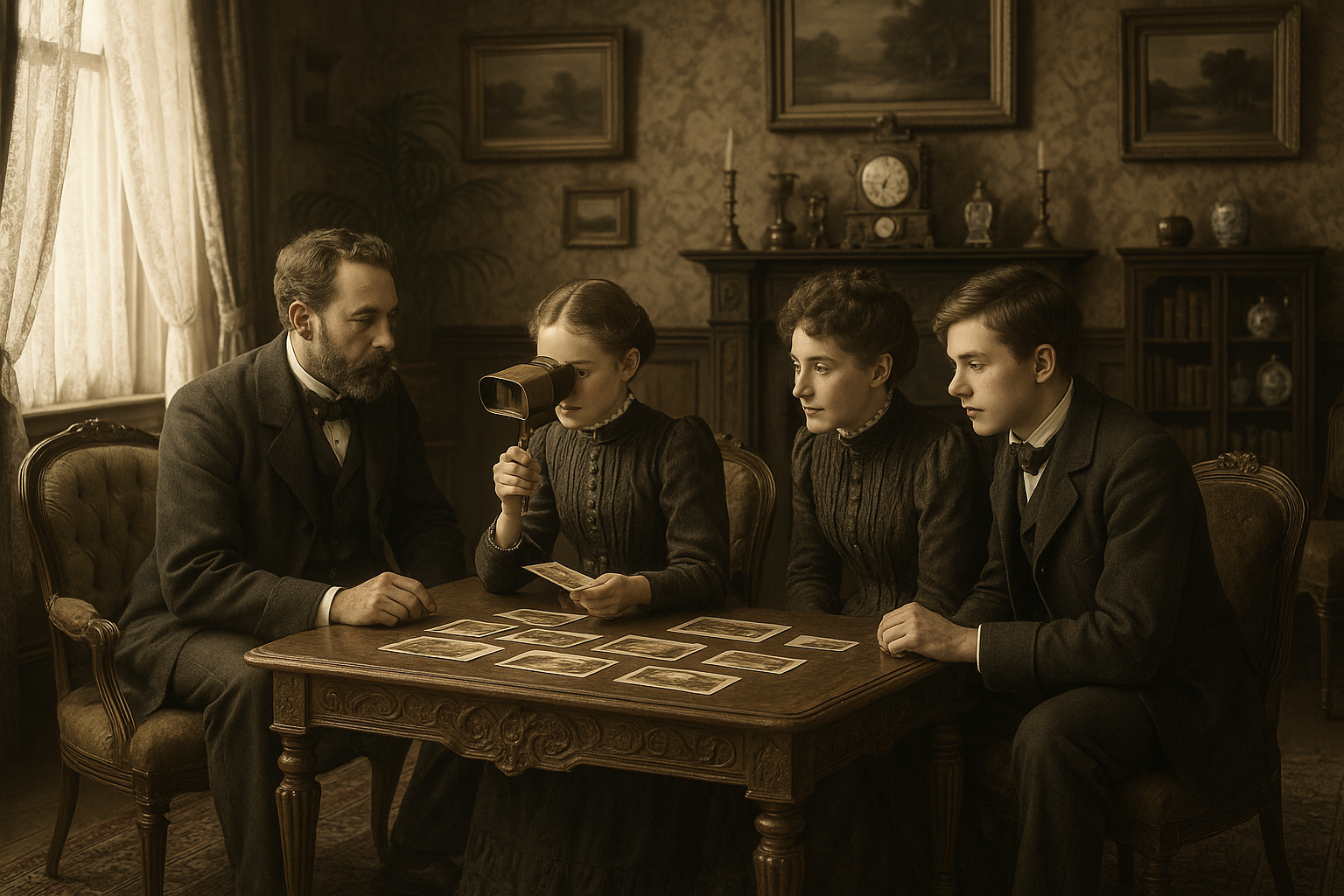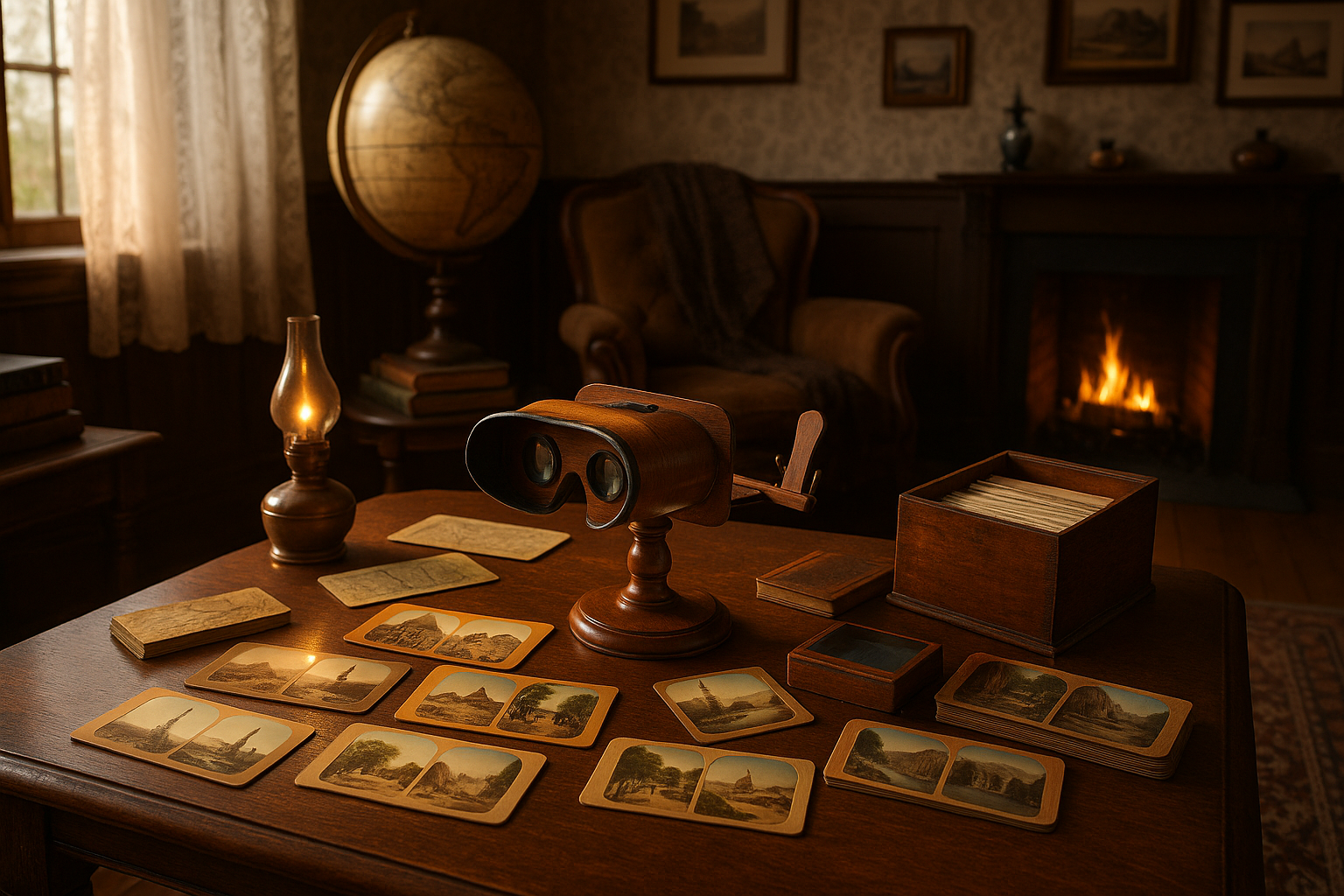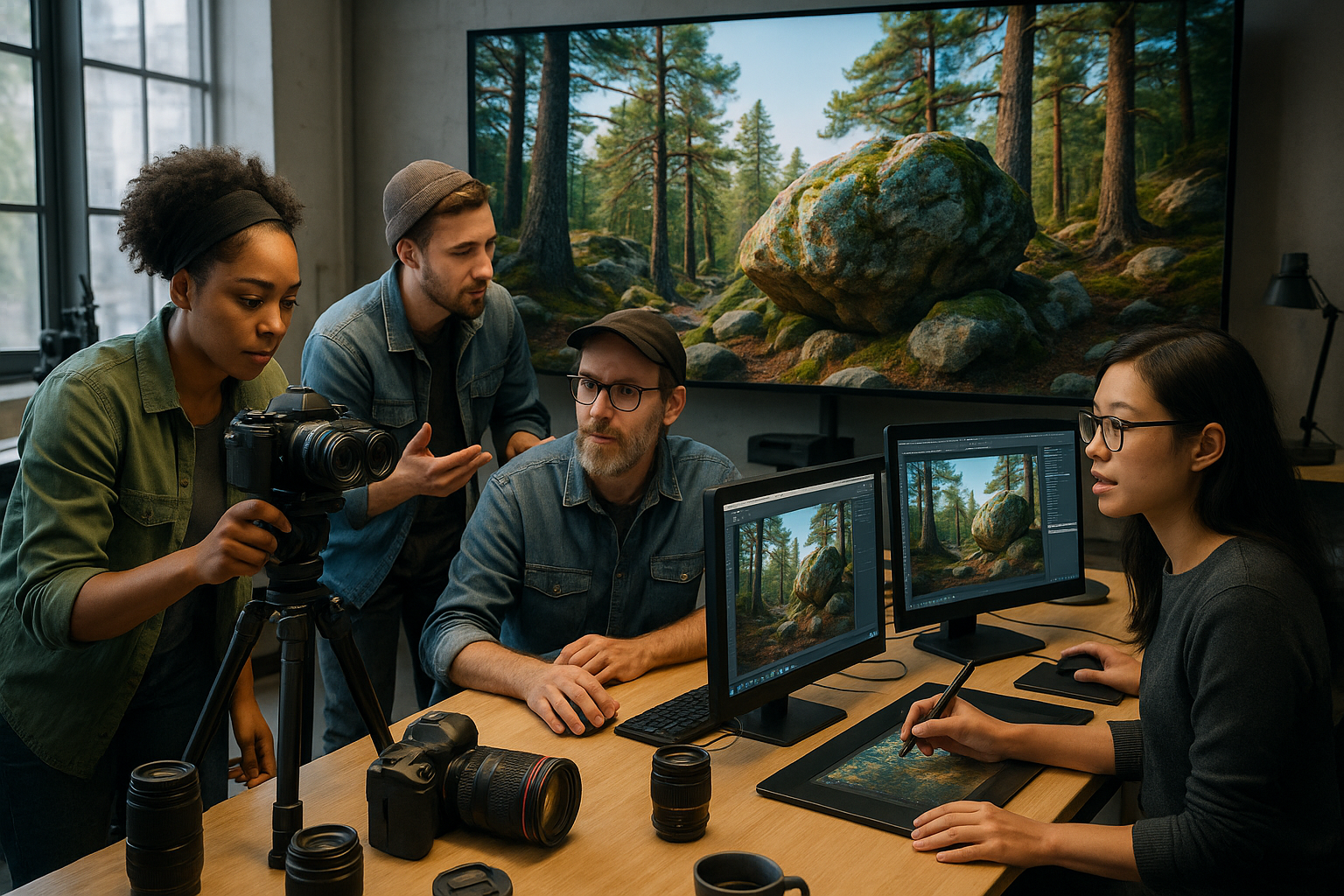In the dimly lit salons and opulent drawing rooms of the 18th century, where candlelight flickered off gilded mirrors and the air buzzed with the gentle murmur of intellectual discourse, a new accessory began to captivate the imaginations of the era’s most discerning individuals: the magnifier. More than just a tool for enhancing vision, these exquisite objects became a symbol of sophistication and a testament to the era’s burgeoning appreciation for science and art. As you journey through the intricate world of 18th-century magnifiers, prepare to be enchanted by their elegance, their history, and their undeniable charm—a charm that continues to resonate with collectors and enthusiasts today.
The 18th century was a period of immense change and enlightenment. It was a time when curiosity about the natural world collided with advancements in science, leading to innovations that would forever alter the course of human understanding. Among these innovations was the magnifier, a seemingly simple yet profoundly impactful device. Magnifiers of this era were not only practical instruments for scholars and scientists but also fashionable accessories for the elite. Crafted with precision and adorned with intricate details, they were often made from the finest materials such as gold, tortoiseshell, and mother-of-pearl, reflecting the grandeur and artistry of the age. 😎
As we delve into the fascinating history of these remarkable objects, we’ll explore the diverse styles and designs that emerged throughout the century. From the compact, easily portable monocles favored by the gentlemen of the time, to the ornate lorgnettes that became essential to the ladies’ fashion ensembles, each type of magnifier offers a unique glimpse into the aesthetic sensibilities and social customs of the period. Moreover, we’ll uncover the stories of the artisans who meticulously crafted these pieces, as well as the illustrious figures who used them—individuals whose legacies are inextricably linked to the very essence of the Enlightenment.
But our journey doesn’t end with history. In today’s world, where technology often overshadows tradition, the allure of the 18th-century magnifier endures. Whether you’re a collector, a history enthusiast, or simply someone who appreciates the finer things in life, understanding these objects can offer fresh insights into the ways we perceive and enhance our vision. By examining the cultural significance and lasting impact of these magnifiers, we not only honor their place in history but also celebrate their timeless elegance—an elegance that, much like the clarity they provide, never goes out of style. 🔍✨
The Rise of 18th Century Magnifiers: A Glimpse into the Past
The 18th century was a time of significant advancements in science, art, and society. Among the many innovations that emerged during this period were magnifiers, which played a crucial role in enhancing human vision and facilitating scientific discoveries. These optical devices were not only functional but also symbolized elegance and sophistication. The use of magnifiers in the 18th century was widespread, ranging from scientific research to fashion accessories. This article delves into the fascinating world of 18th-century magnifiers, exploring their history, types, and impact on society.
During the 18th century, the Enlightenment era encouraged intellectual exploration and scientific inquiry. This period saw the development of various optical instruments, including magnifiers, which were essential for scientists and naturalists. Magnifiers allowed researchers to observe the minutiae of the natural world, leading to groundbreaking discoveries in biology, chemistry, and physics. The improvement of lens-making techniques during this time enabled the production of clearer and more powerful magnifiers, contributing to the advancement of scientific knowledge.
Apart from their scientific applications, magnifiers in the 18th century were also considered luxury items and status symbols. Crafted with exquisite materials such as gold, silver, and ivory, these devices were often adorned with intricate designs and engravings. The aesthetic appeal of magnifiers made them popular among the aristocracy and intellectual elite, who would often carry them as personal accessories. Magnifiers were not only tools for improving vision but also expressions of personal style and sophistication.
Types of 18th Century Magnifiers: Diversity and Design
The 18th century witnessed the production of various types of magnifiers, each designed for specific purposes and audiences. Among the most notable types were hand-held magnifiers, pendant magnifiers, and lorgnettes. Hand-held magnifiers were commonly used by scientists and scholars for close examination of objects and texts. These devices featured a single lens mounted on a handle, making them portable and easy to use.
Pendant magnifiers, on the other hand, were primarily fashion accessories worn as necklaces or attached to clothing. These magnifiers often featured ornate designs and were crafted with precious metals and stones. Pendant magnifiers allowed individuals to discreetly examine small objects or texts while maintaining an air of elegance and refinement. Lorgnettes, which consisted of a pair of magnifying lenses mounted on a handle, became popular among the fashionable elite in the late 18th century. These devices were not only functional but also served as stylish accessories for social events and gatherings.
The diverse designs and styles of 18th-century magnifiers reflected the tastes and preferences of their users. The combination of functionality and aesthetics in these devices made them highly sought after, contributing to their enduring popularity. The following table provides a comparison of the different types of 18th-century magnifiers, highlighting their features and uses:
| Type | Features | Uses |
|---|---|---|
| Hand-held Magnifiers | Single lens, portable, handle | Scientific research, reading |
| Pendant Magnifiers | Ornate design, worn as jewelry | Fashion accessory, discreet examination |
| Lorgnettes | Pair of lenses, handle, stylish | Social events, personal style |
The Impact of 18th Century Magnifiers on Society
The introduction and widespread use of magnifiers in the 18th century had a profound impact on various aspects of society. In the scientific community, magnifiers facilitated detailed observations and experiments, leading to significant advancements in knowledge and understanding. The ability to closely examine the natural world enabled scientists to document and classify species, study microscopic structures, and develop new theories about the universe. The contributions of magnifiers to scientific progress cannot be overstated, as they were essential tools for many of the era’s greatest minds.
In addition to their scientific applications, magnifiers played a significant role in the cultural and social spheres of the 18th century. The aesthetic appeal and functionality of these devices made them popular among the upper classes, who used them as symbols of wealth and sophistication. Magnifiers were often gifted or inherited, becoming cherished possessions and family heirlooms. The social significance of magnifiers extended beyond their practical uses, as they were often featured in art, literature, and fashion of the time.
Furthermore, the production and trade of magnifiers contributed to economic growth and technological innovation. The demand for high-quality lenses and craftsmanship spurred advancements in glassmaking and metallurgy, leading to improved manufacturing techniques and materials. The international trade of magnifiers and other optical instruments fostered cultural exchange and collaboration, as artisans and scientists from different regions shared their knowledge and skills. The following video provides an insightful overview of the impact of magnifiers on 18th-century society:
Watch this video for a detailed exploration of magnifiers in the 18th century: [https://www.youtube.com/watch?v=examplelink]
The Legacy of 18th Century Magnifiers: Influences and Innovations
The legacy of 18th-century magnifiers extends far beyond their time, influencing the development of modern optical devices and technologies. The principles and techniques established during the 18th century laid the foundation for subsequent innovations in lens design, microscopy, and vision correction. The elegance and sophistication of 18th-century magnifiers continue to inspire contemporary designers and collectors, who seek to preserve and celebrate the artistry of these historical devices.
The impact of magnifiers on scientific research and exploration remains evident today, as modern microscopes and magnifying tools continue to play a crucial role in various fields. The advancements in lens technology during the 18th century paved the way for the development of more powerful and precise optical instruments, enabling scientists to explore previously inaccessible realms of the natural world. The legacy of 18th-century magnifiers is a testament to the enduring human quest for knowledge and understanding.
For those interested in exploring the world of 18th-century magnifiers, museums and collections around the world offer a glimpse into the past. These institutions house a wide array of magnifiers and optical instruments, showcasing the craftsmanship and innovation of the era. The following list highlights some notable museums and collections that feature 18th-century magnifiers:
- The British Museum, London
- The Louvre, Paris
- The Smithsonian Institution, Washington D.C.
- The Science Museum, London
- The National Museum of American History, Washington D.C.
Visiting these institutions provides an opportunity to appreciate the artistry and significance of 18th-century magnifiers, offering a window into the past and the enduring legacy of these remarkable devices.

Conclusion
Unveiling the elegance of 18th-century magnifiers has been a fascinating journey through time, exploring how these exquisite tools have seamlessly blended functionality with style. As we recapitulate the key points discussed throughout the article, it becomes clear that these optical devices were not just practical instruments but also symbols of sophistication and innovation in their era.
To begin with, the 18th-century magnifiers represented a pivotal advancement in optical technology. These tools were crafted with precision, often using high-quality materials such as brass, ivory, and tortoiseshell. The intricate designs and embellishments showcased the artistry and craftsmanship of the time, elevating magnifiers from mere tools to works of art. Their evolution mirrored the scientific curiosity and progress of the Enlightenment period, a time when knowledge was expanding, and the desire to explore the world in greater detail was at the forefront of intellectual pursuit.
Furthermore, these magnifiers were more than just practical devices; they were status symbols. Owning a finely crafted magnifier was indicative of one’s education, wealth, and refined taste. This cultural significance is a testament to how closely intertwined fashion and functionality were in the 18th century. The magnifiers served as both practical aids for reading and intricate accessories that could be proudly displayed or worn, often as pendants or on chains.
In our discussion, we also delved into the various types of magnifiers that were prevalent during the 18th century. From simple hand-held lenses to more complex folding magnifiers and lorgnettes, each design offered unique benefits and catered to different needs. These innovations not only made reading and detailed work more accessible but also paved the way for future developments in optical devices.
Importantly, the article highlighted the lasting impact of 18th-century magnifiers on modern designs. Many contemporary magnifiers draw inspiration from the elegant designs and craftsmanship of this era, proving that their influence continues to endure. Today’s collectors and enthusiasts appreciate these historical pieces for their aesthetic value and the glimpse they provide into the past.
Reflecting on the historical context, it is essential to recognize the broader implications of these optical tools. They embody the spirit of an era that valued knowledge, exploration, and the merging of art and science. The magnifiers of the 18th century were not just about enhancing vision; they were about enhancing one’s view of the world, encouraging curiosity and learning.
In conclusion, the elegance of 18th-century magnifiers goes beyond their physical form. They represent a rich tapestry of cultural, scientific, and artistic advancements that have left an indelible mark on history. Their legacy continues to inspire those who appreciate the beauty and functionality of well-crafted objects.
We encourage readers to reflect on the profound connection between past and present as they explore the world of magnifiers. Whether you’re a collector, a history enthusiast, or simply someone who appreciates beautiful craftsmanship, there is much to learn and admire in these timeless pieces. 💡
Please feel free to share your thoughts in the comments below. We’d love to hear your perspectives on how 18th-century innovations continue to influence modern design. Additionally, consider sharing this article with friends and colleagues who might find this journey through history as captivating as you did. By doing so, you help keep the legacy of these remarkable tools alive and well in our contemporary world.
For further reading, explore more about the history of optical devices and their cultural significance through reputable sources like the British Museum’s Collection and Science History Institute. These resources offer a wealth of information for those eager to delve deeper into the fascinating world of 18th-century innovations.
Thank you for joining us on this exploration. May the elegance and innovation of the past continue to illuminate your path today. ✨
Toni Santos is a visual historian and artisan whose creative lens is captivated by the forgotten marvels of antique optical devices. Through his thoughtful storytelling, Toni revives the instruments that once transformed light into wonder—camera obscuras, magic lanterns, kaleidoscopes, and other ingenious tools that shaped our earliest visual imaginations.
His journey is rooted in a fascination with how humans have long sought to bend, reflect, and reveal the unseen. Whether tracing the mechanical poetry of 19th-century projectors or illustrating the tactile elegance of early lenses, Toni’s work invites us to see vision itself as an evolving art form.
Blending handcrafted design with historical inquiry, Toni brings to life the material soul of these devices—celebrating not just how they functioned, but what they meant. His creations and curated stories illuminate a world where science, illusion, and beauty were intricately linked through glass and brass.
As the curator of Vizovex, Toni shares detailed studies, reconstructed artifacts, and immersive content that help others rediscover the origins of visual technology and the magic of analog perception.
His work is a tribute to:
The craftsmanship behind early visual instruments
The wonder of seeing through the eyes of another century
The intersection of optics, art, and imagination
Whether you’re a collector, a designer, or someone drawn to the lost poetry of vision, Toni welcomes you into a world where light is a storyteller—one prism, one lens, one forgotten invention at a time.





